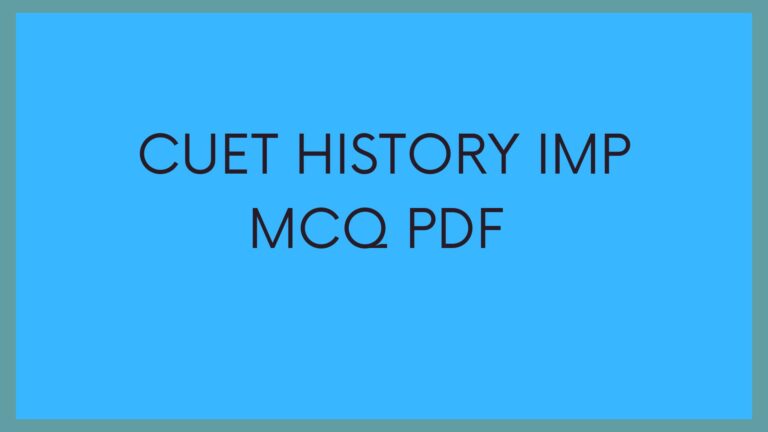Class 12 History Chapter 1 Notes Writing and City Life | Important Topics and Handwritten Notes
This article will provide you with Class 11 History Chapter 1 Notes. Writing and City Life is one of the very important chapters for your exams. You can use these notes for your quick revision and preparation. it can help you to grasp the concept easily, and here I have provided with table and easy concepts for better understanding.
Class 11 History Chapter – Writing and City Life

Class 12 History Chapter 1 Notes Writing and City Life
Class 12 History Chapter 1 Notes Writing and City Life:
Introduction
- The chapter deals with the rise of Mesopotamian civilisation, the world’s first urban culture.
- Writing and city life were interlinked in Mesopotamia.
- Mesopotamia = “Land between the Rivers” (Tigris & Euphrates).
- Urbanisation, agriculture, trade, writing, and administration developed here.
The Beginning of Mesopotamian Civilization
Geographical Setting
- Located in present-day Iraq.
- Fertile Crescent region between Tigris and Euphrates rivers.
- Fertile soil → agriculture flourished.
Importance of Rivers
- Rivers provided irrigation through canals.
- Enabled growth of surplus crops.
- Supported permanent settlements → rise of cities.
Urbanization in Mesopotamia
First Cities
- Around 3500 BCE, earliest cities grew in Sumer (southern Mesopotamia).
- Examples: Ur, Uruk, Lagash, Nippur.
Features of Mesopotamian Cities
- Urban Planning – Houses, markets, temples.
- Temples (Ziggurats) – Centre of economic & cultural life.
- Craft Production – Pottery, metallurgy, weaving.
- Trade – With Egypt, Indus Valley, Anatolia.
- Stratified Society – Kings, priests, merchants, farmers, slaves.
Invention of Writing
Emergence
- Writing first developed in Mesopotamia (c. 3200 BCE).
- Purpose: recording transactions and administration.
- Script: Cuneiform (wedge-shaped marks on clay tablets).
Uses of Writing
- Economic – Kept records of goods, taxes, trade.
- Political – Royal inscriptions, laws (e.g., Code of Hammurabi).
- Literary – Epic of Gilgamesh (world’s first epic).
- Educational – Schools for scribes.
Table: Evolution of Writing
| Stage | Features |
|---|---|
| Pictographs | Drawings of objects, earliest form |
| Cuneiform | Wedge-shaped script on clay |
| Syllabic Writing | Sound-based system |
| Literature | Myths, epics, laws recorded |
Society and Economy
Agriculture
- Main occupation → cultivation of barley, wheat, dates.
- Irrigation networks developed.
- Surplus enabled specialisation of labour.
Crafts and Trade
- Craftsmen: weavers, potters, metalworkers.
- Trade with Indus Valley, Persia, Anatolia.
- Imported copper, tin, precious stones.
Social Structure
- King → supreme authority.
- Priests → managed temples, rituals.
- Merchants → involved in trade.
- Peasants → largest group.
- Slaves → war captives and debt slaves.
Political System
- City-states with local kings.
- Kingship considered divine gift.
- Famous king: Hammurabi of Babylon (1792–1750 BCE).
- Code of Hammurabi → one of the world’s earliest written law codes.
Temples and Palaces
Temples (Ziggurats)
- Centre of religious, social, and economic life.
- Acted as storehouses of grain and goods.
- Priests had high status.
Palaces
- Symbols of royal power and authority.
- Controlled large estates.
- Organised armies and taxation.
Culture and Knowledge
- Literature: Epic of Gilgamesh.
- Mathematics: place-value system, geometry for irrigation & architecture.
- Astronomy: lunar calendar, predicting eclipses.
- Art: seals, statues, cylinder seals used in trade.
Schools and Education
- Schools trained scribes in reading/writing.
- Scribes highly respected, maintained records.
- Education was limited to elites.
Decline of Mesopotamian Civilisation
- Around 2000 BCE onwards → decline due to:
- Overuse of land and salinisation.
- Foreign invasions (Hittites, Persians).
- Decline of trade routes.
- Eventually integrated into Persian and later empires.
Timeline of Key Events
| Year (BCE) | Event |
|---|---|
| 3500 BCE | First Mesopotamian cities |
| 3200 BCE | Invention of writing (cuneiform) |
| 3000 BCE | Temple economy flourished |
| 2700 BCE | Epic of Gilgamesh composed |
| 2350 BCE | Sargon of Akkad’s empire |
| 1792–1750 BCE | Hammurabi’s rule and Code of Law |
| 612 BCE | Fall of Assyrian Empire |
| 539 BCE | Persian conquest of Babylon |
Comparison Table: River Valley Civilizations
| Feature | Mesopotamia | Indus Valley | Egypt |
|---|---|---|---|
| Script | Cuneiform | Harappan script | Hieroglyphics |
| Rivers | Tigris & Euphrates | Indus | Nile |
| Cities | Ur, Uruk, Babylon | Harappa, Mohenjo-daro | Memphis, Thebes |
| Politics | City-states, kings | Centralised | Pharaohs (divine) |
| Contribution | Writing, law, astronomy | Urban planning | Pyramids, calendar |
Conclusion
- Mesopotamia was the cradle of civilisation.
- It gave the world urban life, writing, laws, trade, and culture.
- Writing was closely linked to administration, economy, and religion.
- The civilisation declined but its contributions remain vital to human history.
Class 11 Geography Chapter 2 Notes | The Origin and Evolution of the Earth Important topics
Class 11 Geography Chapter 3 Notes | Interior of the Earth Important topics and Notes






2 Comments